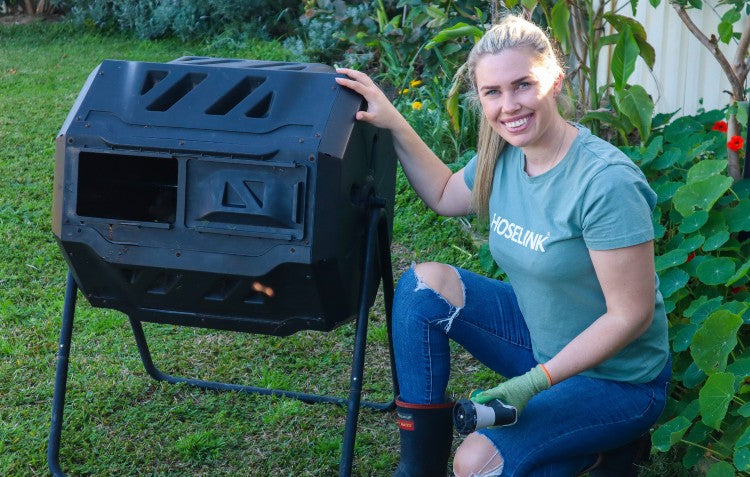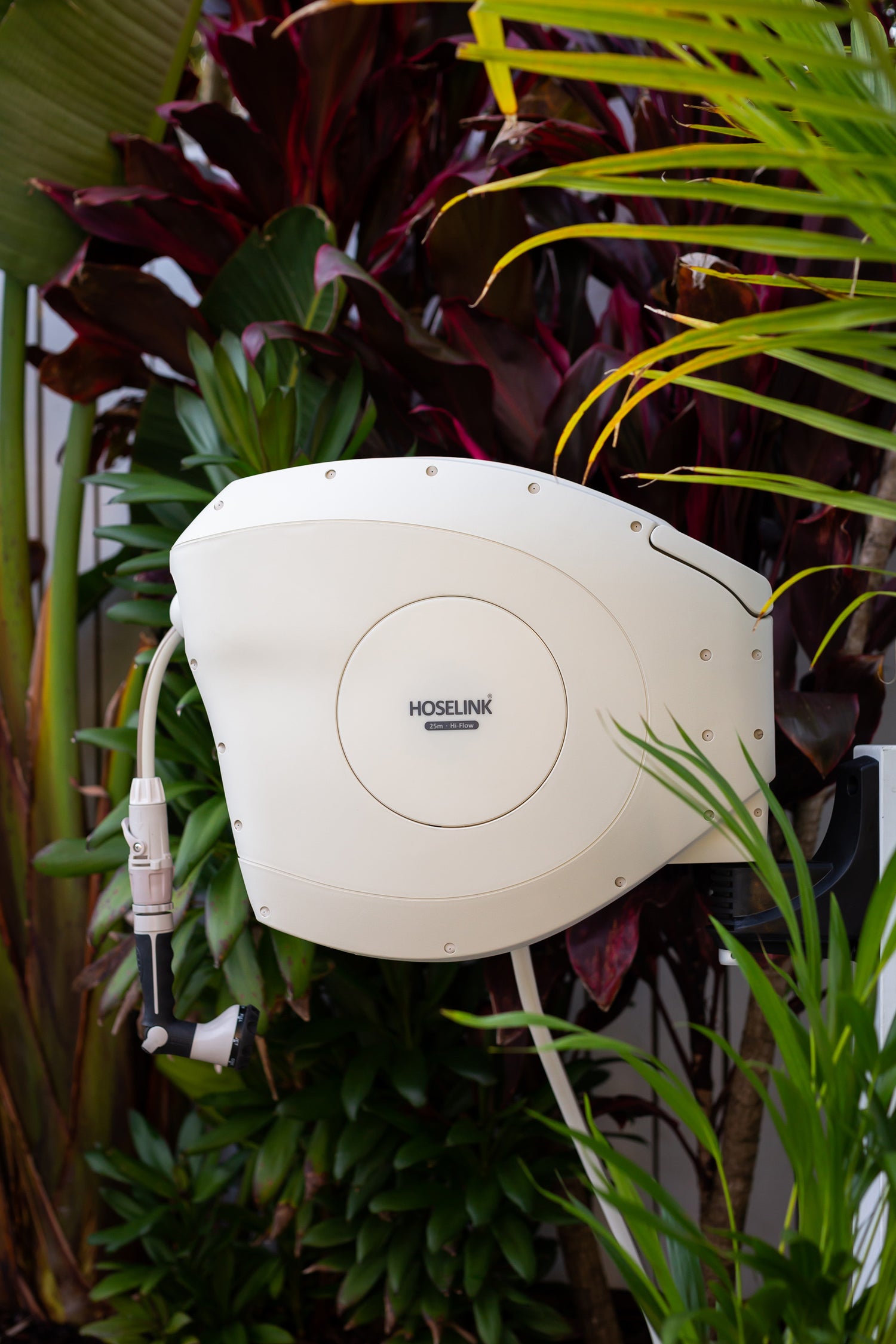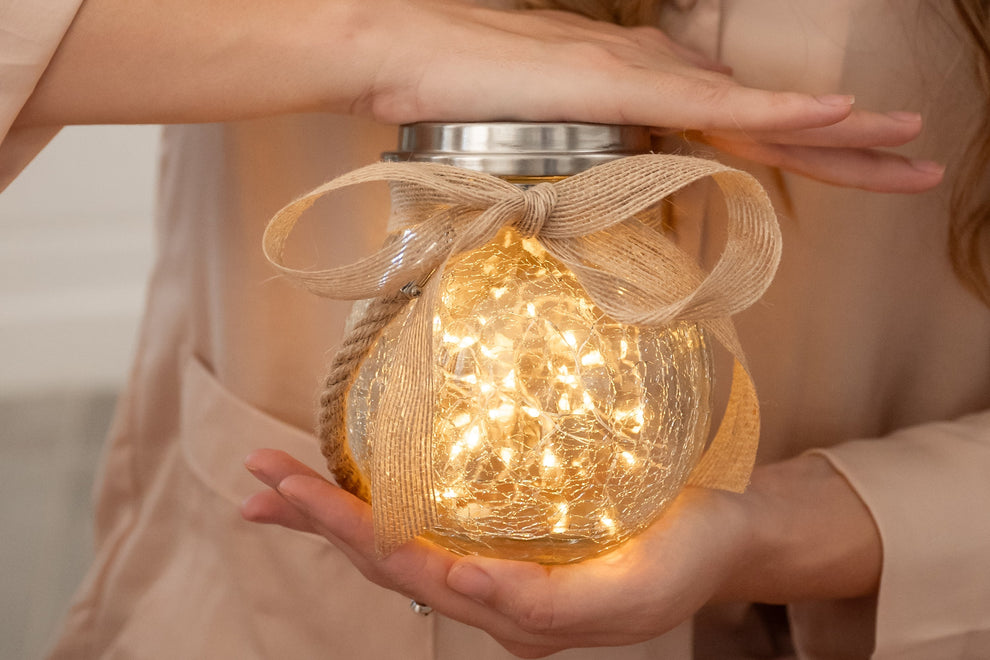Composting turns organic waste into nutrient-rich soil to help feed and grow incredible gardens. Composting is not only great for the fertility of your soil and the secret to growing abundant gardens, but it also stops waste going to landfill. Compost is alive with bacteria, micro-organisms, worms and many other beneficial insects that will do wonders for you garden. Soil that has been left to die will be dry, lack nutrients and will not promote the growth of your plants.
There are many ways to start composting your leftover organic waste, depending on your living situation. Below are some tips and tricks to start composting at home no matter the size of your garden.
Why should we avoid sending food scraps to landfill?
Food scraps, although natural, should not end up in landfill. The problem is, when food scraps are sent to landfill, they are covered with other rubbish and starved of oxygen. They cannot break down correctly so, in turn, they produce methane gas. Methane gas has a negative effect on global warming and our future planet. On average, Australians throw out up to 20% of the food they buy, which, once sent to landfill, is generating the methane equivalent to around 6.8 million tonnes of carbon dioxide. Not to mention all the energy used to get that food to your table in the first place*.
Build sustainable gardens
Creating your own compost at home will reduce waste and help you create a more sustainable garden. Food that you have grown in your garden can then be put back into the compost to feed your future plants. It is a sustainable cycle that will not only save you money, but also have positive impacts on the planet as you work with nature instead of against it.

Where do I start with composting?
To get started on your composting journey there are a few things to consider before you jump right in. Below are some tips on selecting the right compost system for your garden and how to keep your compost healthy. This will go a long way to helping you create a simple and effective compost routine to ensure you get the most out of everything you grow.
Choosing a compost bin – First, you will need something to make your compost in. There are many systems available depending on the size of your garden, including DIY compost bays, compost bins, tumblers or in-ground worm towers.


Indoor compost bucket - It can be handy to have a small compost bucket with a lid to add your kitchen scraps into. This will make it easy to transfer your inside waste out to your compost bin. Keep it small, so that you will need to empty it regularly to reduce odour.
Tools needed - Secateurs to cut up plant matter, gloves to protect your hands, a rake to collect dried leaves and a large fork to aerate the pile.
Compost bin location - Place your compost bin or system in a location that is easily accessible. Not too far from your house and close to your garden. This will ensure that it is quick and easy to add your kitchen scraps and extra green waste from the garden. A location away from full sunlight will help to retain moisture and stop it from drying out.
Scraps and waste - You will need to add a mix of green and brown ingredients to create the right temperature and environment for the bacteria to live and start breaking down your scraps. If you add too much green (nitrogen) waste without any brown (carbon), the balance will be off, and you may find the compost bin starts to smell and looks like a slimy mess. Aim for ratios of roughly 2:1 or 50:50. Green to brown. A good way to maintain this ratio is to add in some dried leaves or brown matter each time you add greens/scraps to your compost.


Spread in layers - Composting is all about layers. Try adding a mix of green and brown layers as you go. It is also important to spread out your materials and cut up large items into smaller parts using your secateurs. The smaller the pieces, the quicker they will be able to break down. Tear or shred paper and cardboard into smaller pieces and scatter across to form a layer. This will help disperse the materials so that they don't end up in a thick, matted clump, as this will slow down the process.
Add garden soil - It is not essential to add soil, but it can help to add in a few handfuls of soil from your garden. This soil will already have living microbes that will help kickstart your compost.
Keep hydrated - Keep your compost pile moist but not too wet, as this is important to speed up the composting process. Ensure you have your Hoselink Hose nearby and use the shower function to moisten the layers evenly. This is especially important during the warmer months. Keep your compost covered to reduce evaporation.
Turn and aerate - The bacteria and microorganisms that get to work breaking down your scraps are alive and need oxygen to live. It is important to tumble or mix your compost regularly to help add oxygen into the centre of the pile.

Finished compost
Once all your food scraps and plant material have turned into dark, nutrient-rich soil, you can add this to your garden beds to replenish and feed your plants. As plants grow, they draw up nutrients from the soil, so it is important that we continue to replenish and feed our gardens regularly.
Urban composting
Worm farms are great for urban environments because they take up very little space. They also provide new ways for people with no land to connect with others that do and share compost scraps. Check out your local community garden, Facebook group or there is even an app: Sharewaste.
Keep it simple
Keep it simple and allow nature to do what it does best. Create systems that replenish and regenerate the earth rather than have a negative impact:
- Choose a convenient location
- Add a balanced mix of green and brown waste
- Add soil microbes
- Hydrate & cover
- Aerate and turn
The key to a thriving garden is to feed and nourish your soil just as much, if not more, than your plants.
Care for your soil and your plants will grow with more ease and abundance. Nature is amazing, and when we allow nature to do the work, there is balance and flow. Gardening will feel more sustainable, and your plants will thrive all year round too!










